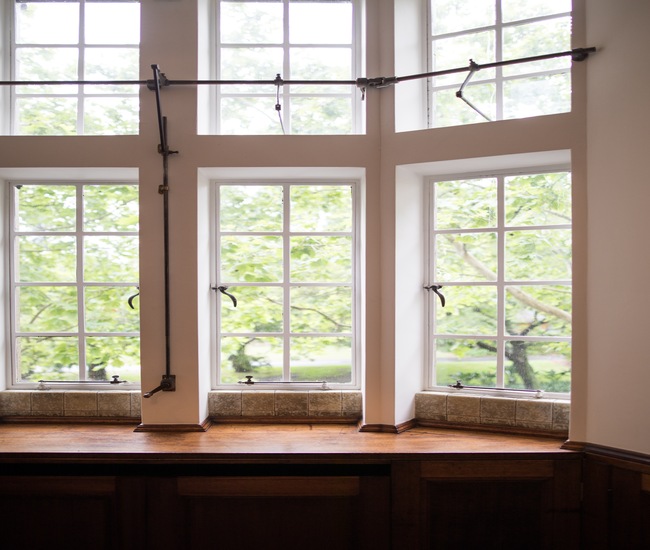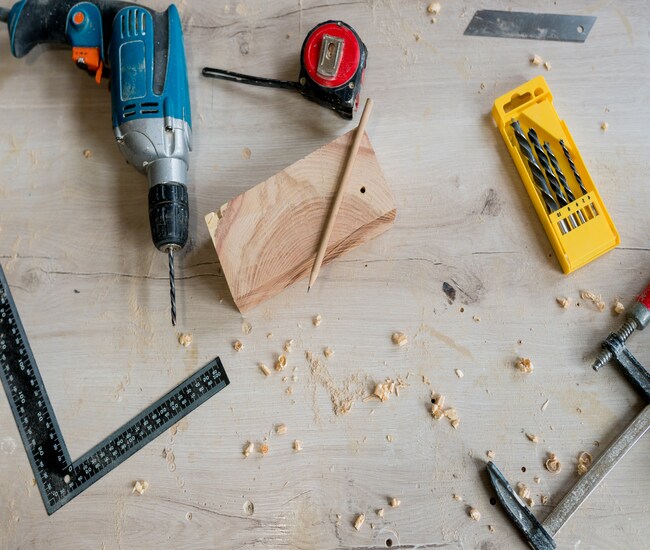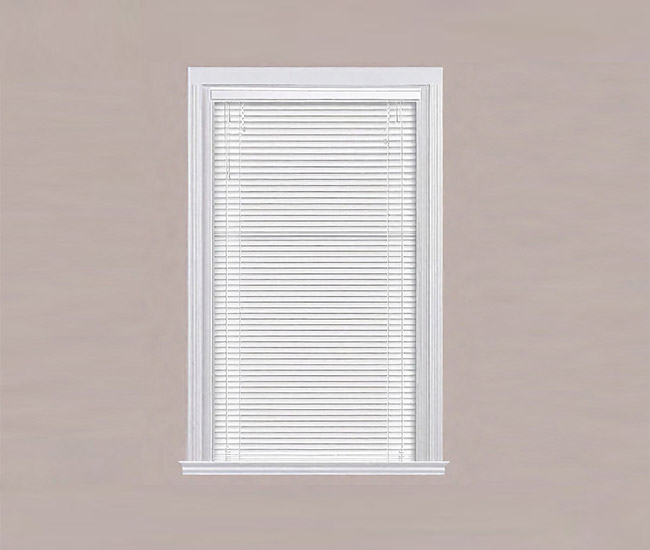Looking for an effective and affordable way to treat your bay windows? Faux wood blinds are a great choice for improving curb appeal, controlling light, adjusting privacy, and improving the insulation potential of bay windows. Here is a comprehensive guide about faux wood blinds for bay windows. You will also learn about the pros and cons, installation, safety options, and cleaning and maintenance of faux wood blinds.
But before you learn in detail about faux wood blinds for bay windows, it is pertinent to know about bay windows.
What are Bay Windows?

A bay window projects outward from the outside wall of a building, thereby creating a small alcove or bay within your room. This type of window is generally made up of three or more panels or individual windows. Among them, the center panel or window is the largest one while the side panels/windows are angled toward the wall. Bay windows are often found in mansions of the Victorian and Edwardian eras. They are considered to be a distinctive architectural feature that can add both beauty and functionality to a room. Bay windows can provide more natural light, better ventilation, and a panoramic view of the outside scenery.
Why Choose Faux Wood Blinds for Bay Windows

Faux wood blinds are a cheaper alternative to real wood blinds. So, they are an economical window treatment option for bay windows where you need multiple sets of blinds for the treatment of a single window. Also, faux wood blinds are fully customizable for size, style, color choice, and lift option, so you can choose a perfect fit according to the dimensions of the individual panels/window frames of a bay window and the interior decor style.
Pros and Cons of Faux Wood Blinds for Bay Windows
Faux wood blinds are a popular option for treating bay windows due to their durability, versatility, ease of installation, and affordability. However, like any window treatment, they have some advantages and disadvantages.
Here are some pros and cons of faux wood blinds for bay windows:
Pros
- Cost-Effectiveness: Faux wood blinds are generally more affordable window treatments for bay windows than real wood blinds, making them an attractive option for those on a budget.
- Durability: Faux wood blinds are made from synthetic materials that are resistant to moisture, fading, cracking, and warping. This makes them an ideal choice for humid areas such as kitchens and bathrooms.
- Versatility: Faux wood blinds come in a wide range of colors, sizes, and finishes, making it easy to find a style that complements your interior decor style.
- Ease of Cleaning: Faux wood blinds for bay windows can be easily cleaned with a feather duster or a piece of a damp cloth.
Cons
- Lack of Natural Appeal: Faux wood blinds for bay windows do not have the same natural look and feel as real wood blinds, which can be a drawback for those homeowners looking for a more high-end look.
- Limited Material Choices: Faux wood blinds cannot be customized for material, as they are only available in composite wood, or vinyl/PVC material.

- Heavier: Faux wood blinds for bay windows tend to be heavier than real wood window treatments, which can make them more difficult to install and operate. However, a motorized lift system can make it easier to raise, lower, or adjust your faux wood blinds.
- Environmental Concerns: Faux wood blinds for bay windows are made from artificial materials, which may not be as environmentally friendly as natural wood blinds.
How to Install Faux Wood Blinds on Bay Windows
Installing artificial wood blinds on bay window frames may seem a daunting task, but with the right tools and some basic DIY skills, you can complete the job quickly and conveniently.
- Measure Your Windows: Measure the width and height (w x h) of each window inside the bay and record the measurements. Make sure to measure at least twice to ensure accuracy for a perfect fit.

- Order your Blinds: Order the faux wood blinds that fit your bay windows’ measurements. Make sure to order the correct size for each window frame.

- Gather your Tools: You’ll need a drill, screws, a screwdriver, a level, a pencil, a tape measure, and mounting brackets to fix faux wood blinds on the frames of individual bay windows.

- Install Mounting Brackets: Attach the mounting brackets to the inside of each window frame, following the manufacturer’s instructions. Use a level to ensure the mounting brackets are straight and even.
- Hang the Blinds: Hang the blinds onto the mounting brackets. This step may require the help of another person to hold the blinds while you attach them to the brackets.

- Test the Blinds: Test your blinds to make sure they operate (raise, lower, and adjust) smoothly and evenly. Adjust the slats as needed to ensure they fit properly and look straight.
Overall, installing faux wood blinds on individual panels/windows of a bay window can be a bit tricky, but with the above DIY tips, you can have a beautiful and functional window treatment that complements and boosts your home’s interior decor style.
Cleaning and Maintenance of Faux Wood Blinds
Regular cleaning and maintenance of manufactured wood blinds for bay windows can keep them looking fresh and working at their best for many years.
Here are some DIY tips to clean and maintain your faux wood blinds for bay windows.
- Regular Dusting: Use a soft cloth or a feather duster to dust your faux wood blinds for bay windows regularly. This will help prevent dust, dirt, and grime from accumulating on the slats.
- Vacuuming: Vacuuming is an easy way to clean your faux wood blinds for bay windows. You can use a brush attachment on your vacuum cleaner to gently vacuum the slats for removing any dust or dirt.

- Repairing and Fixing Issues: Keep checking your window blinds for bay windows periodically to make sure the mounting brackets and screws are in place. If you find any loose screws, tighten them. Similarly, you can adjust the slats as needed.
Safety Options for Pets and Children

Faux wood blinds for bay windows come with advanced safety options for children and pets. The best option is to install a cordless lift system in place of a cord or want. Different cordless lift systems, such as top-down, bottom-up, motorized, and smart eliminate the risk of choking for young children and pets in your home.
